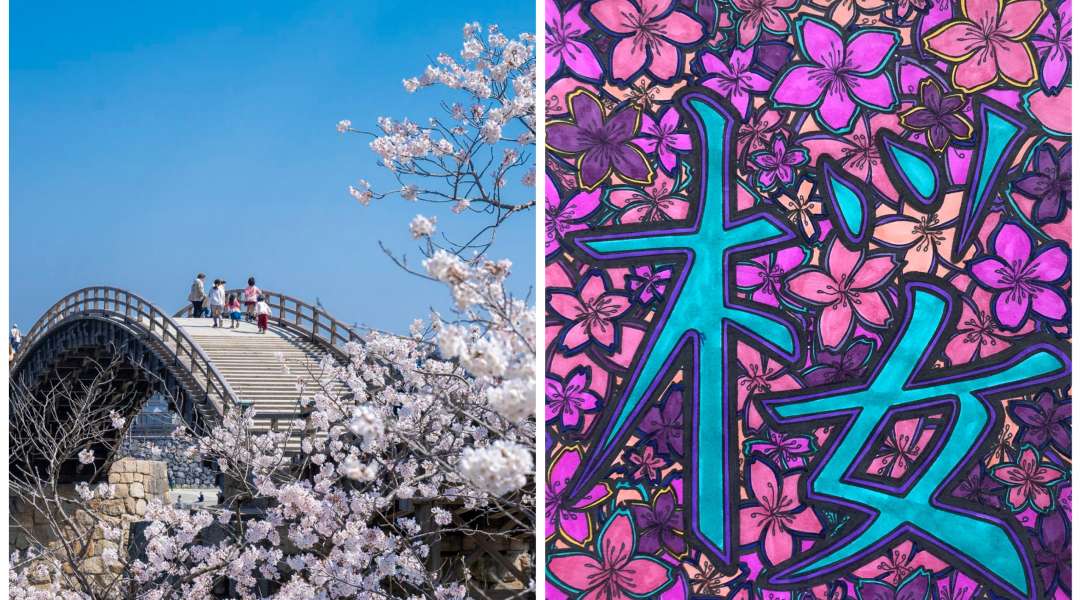
Regardless on where you stand on 'new year, new me' we're all bound to be affected by the shift in gear somehow, whether that's Dry Jan, a new gym membership, veganuary or indeed Japanuary!
While the latter refers to the way we can incorportate Japanese wellness hacks into day-to-day life and start the year the right way, we're wondering if there's not a bigger challenge we can all aspire to!
In some of the most exciting news of 2021, Duolingo announced that Japanese is not only now the fastest growing language on the app, but also overtook Italian as the 5th most studied language. Now, whether that's a love for all things pop culture, a spot of brain training or just a bit of fun, we reckon we could all benefit from a learning a little of the lingo, especially if we plan to make 2022 the year we finally get to Japan! Read on for some basic phrases and tips on how to get stuck in. Your Japan holiday starts here!

Suzan Aslan, "Beautiful Languages"
Preparing for a trip is always an exciting process, the joy of flipping through guidebooks, scrolling and fervently researching to create the perfect itinerary… There is one more thing that can connect you with your dream holiday destination and allows you to live the culture rather than be a passive observer - learning the local language!
Japanese was the 5th most popular foreign language studied on the popular platform ‘Duolingo’ in the UK in 2020, and it was the second fastest growing language, and while many first-time visitors feel anxious about getting around Japan without any Japanese, you can actually get by without knowing a lick! There are signs in both Japanese and English on public transport, shopping in convenience stores you won’t have issues with identifying food, and many others.
However, studying Japanese language can help you understand the culture and impress quite a few locals on the way! Learning a new language is a journey and you don’t need to master ALL of it to have a great time. We prepared a short guide for both people who want to get to the bottom and those of us who just want to feel more confident on their grand adventure.

Where to start?
Whether you’re going in for the long run or just want to brush up on your vocabulary, we recommend to start with some simple greetings. Pronunciation can be tricky for some so if you’re really going in, try watching some YouTube videos and repeat after them. The good news is that haggling is not necessary in Japan, so you don’t have to stay on top of your numbers! We include the Hepburn romanisation of the words for all willing first-timers.
| Japanese | English Translation |
| Ohayo gozaimasu | Good morning |
| Konnichiwa | Good afternoon |
| Konbanwa | Good evening |
| Sayonara | Goodbye |
| Oyasumi nasai | Good night |
| Gomennasai | I'm sorry |
| Sumimasen | Excuse me |
| Arigato gozaimasu | Thank you |
| Hai | Yes |
| Iie | No |
| ...wa doko desuka? | Where is...? |
| Ikura desuka? | How much is it? |
| Oishii | Delicious |
| Tanoshii | Fun |
| Itadakimasu | Let's dig in (used before starting to eat) |
| Gochiso sama deshita | Thank you for the food (once you're finished) |
| Wakarimasen | I don't understand |
| Tasukete kudasai | Please help me |
Another especially useful skill for all travellers out there is reading. There are three types of characters: hiragana, katakana, and kanji. All of them have different characteristics and in general a mixture of the three is used on everyday basis as you can see below:
I am British私はイギリス人です。 Phonetical transcription: Watashee wa eegy reesu jeen dess Hepburn romanisation: Watashi wa igirisujin desu

Hiragana is used for some Japanese words and grammatical elements, there are 46 basic characters and 71 including diacritics. You can also find it next to kanji characters showing how to read them so it's very useful to know.
| Hiragana character | あ | い | う | え | お |
| Transcription | a | i | u | e | o |
Katakana is used to write down foreign words, loanwords, names and onomatopoeia. For example the word ‘banana’ is written using this script and it’s バナナ (banana). Just like with hiragana there are 46 basic characters representing sounds.
| Katakana character | ア | イ | ウ | エ | オ |
| Transcription | a | i | u | e | o |
Kanji are the most challenging because a few thousand of them are used by Japanese people on everyday basis! They usually represent concepts and some of them have more than one pronunciation but the best part about kanji is that practicing them can be really fun. Take a look at artwork from Susan Aslan’s colouring book "Beautiful Languages", she has taken Japanese kanji characters and transformed them into beautiful compositions that will help you remember their meaning. Put your art hat on and indulge in a sneaky colouring session to unwind and learn how to write the character for 'cherry blossoms' (桜) read as 'sakura' ! Visiting Japan later, make sure to watch out for the characters you’ve mastered because nothing quite beats the pleasure of shouting "I know that one!".

What to study?
If you’re up for the challenge, we definitely recommend studying hiragana and katakana before your visit. You can spot them in many surprising places and they are just fun to study! Imagine entering a restaurant and being able to read the whole menu in Japanese! That's not an unrealistic fantasy, some restaurants or fast food chains have menus written in katakana, others will have certain names written in hiragana. It's also useful to know one or two kanji characters.
How?
There are many different ways to study a language and everyone has their own preferences. You can check out on of the language learning apps like Duolingo, Anki for flashcards, LingoDeer or Wanikani for kanji. Japan Foundation has some useful resources on their website and free online self-study courses for beginners. You can also go the traditional way and get a textbook like Genki I to study alone or with a teacher. Don't forget that getting to know the culture is an important part of language learning so try a movie, the Japanese news or a Japanese tv show.

During your trip
We all know learning a new language is great but you might need some backup in unexpected situations. Download the Japanese language pack for Google Translate, it can help with reading (there is an option to take a picture of text and have Google figure out what it means) or translate your speech. Speaking of translating a conversation, check out Voice Tra which exists for that sole purpose! If you’re really stuck, you can use the good old point and show method, and take a flip through our Tourist’s Language Handbook. You can print it to always have ready in case you need to communicate with someone unexpectedly! We also recommend downloading a free dictionary to save new words you encounter on your trip. You can incorporate them into your scrapbook or social media posts after the trip, and even work them into some lovely works of art - you can find Suzan's "Beautiful Languages" colouring book on Waterstones' website!


























































